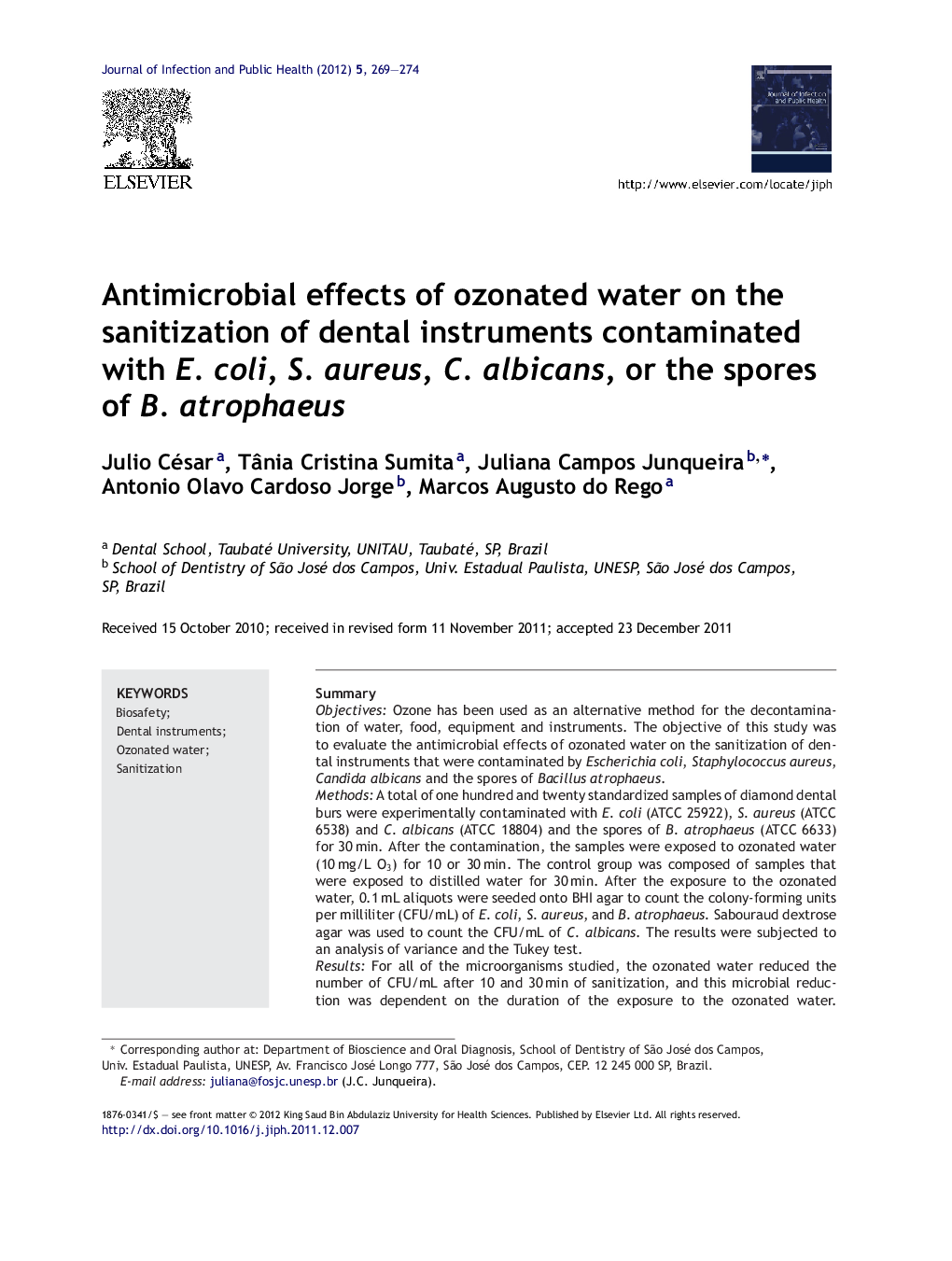| Article ID | Journal | Published Year | Pages | File Type |
|---|---|---|---|---|
| 3406108 | Journal of Infection and Public Health | 2012 | 6 Pages |
SummaryObjectivesOzone has been used as an alternative method for the decontamination of water, food, equipment and instruments. The objective of this study was to evaluate the antimicrobial effects of ozonated water on the sanitization of dental instruments that were contaminated by Escherichia coli, Staphylococcus aureus, Candida albicans and the spores of Bacillus atrophaeus.MethodsA total of one hundred and twenty standardized samples of diamond dental burs were experimentally contaminated with E. coli (ATCC 25922), S. aureus (ATCC 6538) and C. albicans (ATCC 18804) and the spores of B. atrophaeus (ATCC 6633) for 30 min. After the contamination, the samples were exposed to ozonated water (10 mg/L O3) for 10 or 30 min. The control group was composed of samples that were exposed to distilled water for 30 min. After the exposure to the ozonated water, 0.1 mL aliquots were seeded onto BHI agar to count the colony-forming units per milliliter (CFU/mL) of E. coli, S. aureus, and B. atrophaeus. Sabouraud dextrose agar was used to count the CFU/mL of C. albicans. The results were subjected to an analysis of variance and the Tukey test.ResultsFor all of the microorganisms studied, the ozonated water reduced the number of CFU/mL after 10 and 30 min of sanitization, and this microbial reduction was dependent on the duration of the exposure to the ozonated water. E. coli exhibited the greatest reduction in CFU/mL (2.72–3.78 log) followed by S. aureus (2.14–3.19 log), C. albicans (1.44–2.14 log) and the spores of B. atrophaeus (1.01–1.98 log).ConclusionThe ozonated water was effective in reducing the CFU of E. coli, S. aureus, C. albicans and B. atrophaeus spores, suggesting that ozonated water can be used for the sanitization of dental instruments.
► The ozonated water reduced the number of microorganisms after 10 and 30 min of sanitization. ► E. coli had the greatest reduction in CFU/mL, followed by S. aureus, C. albicans and B. atrophaeus spores. ► Ozonated water can be used for the sanitization of dental instruments.
